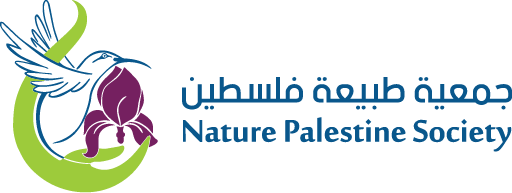As I was pursuing my doctorate a few years ago, my dissertation results were sometimes complicated, and it seemed impossible to get my three supervisors to agree on the results. The wisest of my supervisors often told me: “A picture is worth a thousand words.” And it was true. In many cases an illustrative graph that summarized my results seemed to work like magic. Many readers would probably agree with me that scientific language is often complex and sometimes even incomprehensible; on the other hand, if this language is translated into a simple and accessible format it can benefit policymakers, stakeholders, and the public.

Palestine is known for its rich flora, where about 1,613 vascular plant species have been recorded in the West Bank alone. This floral richness can be attributed to Palestine’s distinct location as a land that bridges three continents and has five distinct biogeographical zones packed into a small area. Unfortunately, this floral wealth faces major threats that compromise its existence, such as urbanization, habitat fragmentation and loss, invasive species, climate change, and pollution.
Transitional ecology is defined as the incorporation of ecological research into public art, which includes transforming vacant urban areas into community platforms. Although transitional ecology sounds like something fancy, it has been implemented by the Nature Palestine Society (NPS) team to engage communities and raise public awareness regarding the vulnerable, near-endemic Iris atrofusca (Sawsanet Shafa Al-Ghour), a royal iris flower that is distributed, in patches, along the eastern slopes of the West Bank.

In March 2020, NPS was awarded a grant by the Critical Ecosystem Partnership Fund and BirdLife International to assess, conserve, and protect Iris atrofusca within the Jabal Tammoun Nature Reserve, in the northeastern part of the West Bank. Many activities were implemented over the course of this 14-month project. A comprehensive survey was completed to assess the distribution of the royal iris, an essential piece of information that was critically lacking. Moreover, the Iris atrofusca Botanical Garden was established for in-situ conservation actions of the rare plant, as well as smaller botanical gardens at three schools in the village of Tammoun. To raise awareness regarding the importance of protecting this treasure, three workshops were held for stakeholders, farmers, students, and rangers, and marked hike trails were created for nature lovers to enjoy the landscape of the nature reserve and its flora and fauna.

Despite successful implementation of these activities, the NPS team felt that something was still missing; so, after an extensive brainstorming session, the team decided to create a mural to represent the lifecycle and habitat of Iris atrofusca, as well as conservation slogans to serve as an educational model. The mural was created on the concrete wall (30 meters in length and 3 meters in height) that surrounds the Muscat Secondary Boys School, which is located on the way to the nature reserve, transforming it into a piece of art. This mission was accomplished with the help and support of local artists, teachers, students, and the directorate of the Ministry of Education in the Tubas District. These efforts were crowned with success when the general director of the Environmental Quality Authority, Jameel Mtoor, and the governor of Tubas District, Major General Younes Al’Assi, along with stakeholders and a wide spectrum of community members attended the launching ceremony of the mural to celebrate Palestinian Environment Day. Positive feedback from this event helped emphasize the importance of adopting a multidisciplinary approach to public engagement and raising awareness of the importance of implementing ecologically oriented research.

While the funding for this project ended a few months ago, the mural still sends a loud and clear message that reminds hundreds of people every day of the rare jewel of the Iris atrofusca and the importance of its conservation.

Photo by Alaa Kanaan.
A Picture Is Worth a Thousand Words – This eek in Palestine
Publish Date: August 2021
